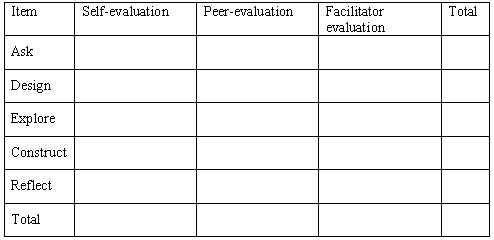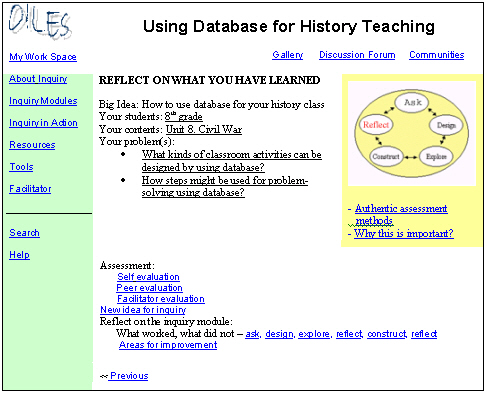Design Guidelines
Expert Review
Home > Design Guidelines > 2. Inquiry Module >2.5. Design of the "Reflect" phase
2.5A Prepare three types of assessment: self-evaluation, peer-evaluation, and facilitator evaluation. Provide rubrics for the evaluation. Allow learners and facilitators to access this form at any time during the inquiry process instead of filling out all blank fields at the end of the process. The figure below is an example of evaluation rubric.
Examples of each item might be:
- Ask: Was the problem that the learners articulated authentic enough?, etc.
- Design: Were the design strategies appropriate to solve the problem?, etc.
- Explore: Were the solutions of activities appropriate?, etc.
- Construct: Were the conclusions based on the data?, etc.
- Reflect: Were the solutions appropriate?, etc.
2.5B Ask a new idea emerging from the inquiry process. If the problem(s) is related to a certain inquiry module, encourage learners to take the module. If the problem is overarching enough, encourage them to design an inquiry module using the problem.
2.5C Let them reflect on the inquiry module. Ask them what worked, what did not work, and what areas should be improved. Make it clear that this reflection is a learning process and also will be evaluated. Figure 8.6 shows one example of the Reflection page.
Example (Screen shot)
Comment: byunlim@indiana.edu
Copyright, 2001: Byung-Ro Lim


